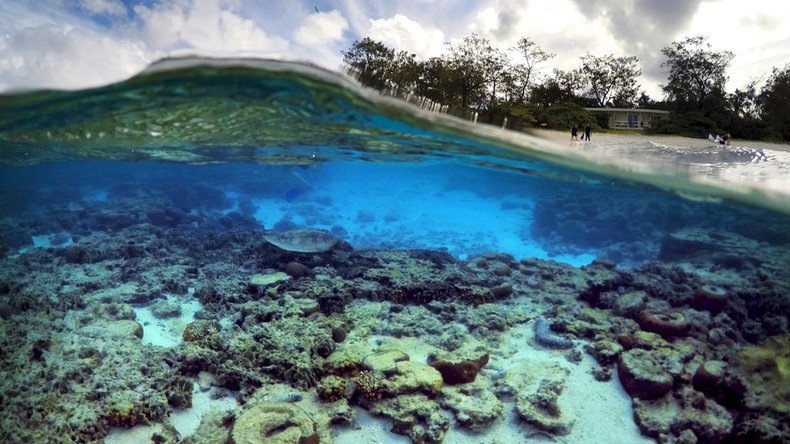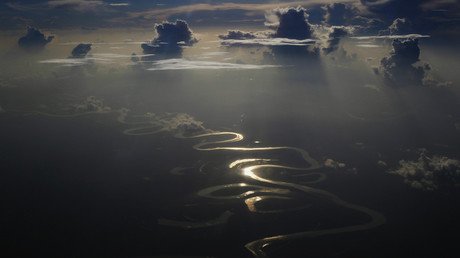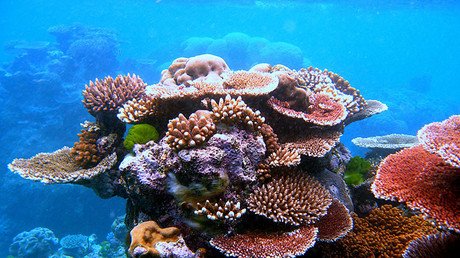Viral spiral: 'Obituary' for embattled Great Barrier Reef slammed for hyperbole

While the Great Barrier Reef, the largest living structure on the planet, is in a dire state, it's not "dead" yet. However, a recent "obituary" for the Reef went viral, indicating the public appeal of global-warming-inspired doom porn.
On October 11, Outside magazine's website published 'Obituary: Great Barrier Reef (25 Million BC-2016)' in which the author detailed the Great Barrier Reef's attributes as well as the damage done by warming, more acidic ocean water to the complex, 133,000-square-mile system off Australia's coast.
The Great Barrier Reef of Australia passed away in 2016 after a long illness. It was 25 million years old: https://t.co/TrEXJuTxFJ#RIPpic.twitter.com/7U3wPDPSM2
— Outside Magazine (@outsidemagazine) October 12, 2016
"The Great Barrier Reef of Australia passed away in 2016 after a long illness," the article begins. "It was 25 million years old."
The article specifically blames the "death" on inaction from the likes of the Australian government and its tourism-centric policies.
"No one knows if a serious effort could have saved the reef, but it is clear that no such effort was made," the obituary reads. "On the contrary, attempts to call attention to the reef’s plight were thwarted by the government of Australia itself, which in 2016, shortly after approving the largest coal mine in its history, successfully pressured the United Nations to remove a chapter about the reef from a report on the impact of climate change on World Heritage sites."
NOOOO! This is SO WRONG to write off the #GreatBarrierReef -We can & must save it, and reef tourism jobs -Article is full of misinformation https://t.co/1tX0bkPI8a
— Terry Hughes (@ProfTerryHughes) October 13, 2016
The article received a strong response on social media and has been shared widely on Twitter and Facebook, with many pointing out the clickbait nature of the piece.
The article may be an attempt at satire that seeks to draw attention to the poor state of the Reef. But Russell Brainard, chief of the Coral Reef Ecosystem Program at the National Oceanic and Atmospheric Administration’s Pacific Islands Fisheries Science Center, told the Huffington Post that the popularity of the article may have an opposite effect that breeds more hopelessness than inspiration for positive action.
He said some may take the article "at face value that the Great Barrier Reef is dead," thus instilling the belief that "if there’s nothing that can be done, let’s not do anything and move onto other issues,” he said, when there is time to rehabilitate the Reef.
The article is also "full of mistakes," according to Terry Hughes, director of the ARC Centre of Excellence for Coral Reef Studies, and should not deter efforts to aid the Reef.
"Large sections of it (the southern half) escaped from the 2016 bleaching, and are in reasonable shape," he told Huffington Post. "The message should be that it isn’t too late for Australia to lift its game and better protect the GBR, not we should all give up because the GBR is supposedly dead."
No doubt, the Great Barrier Reef, in the Coral Sea, is undergoing a "complete ecosystem collapse," according to a recent report released in July by Coral Watch. Parts of the Reef are still bleaching even in the Southern Hemisphere’s winter, and fish populations are disappearing, the report found. The Great Barrier Reef has suffered from bleaching in as much as 93 percent of the reef, with 80 percent enduring severe bleaching, it added.
About 35 percent of the northern and central Reef's corals have died due to bleaching, Hughes' ARC Centre of Excellence reported in May.
"This year is the third time in 18 years that the Great Barrier Reef has experienced mass bleaching due to global warming, and the current event is much more extreme than we’ve measured before," Hughes said at the time.
Bleaching is the result of warming sea water which causes coral to release small photosynthetic algae in an effort to cool. The algae give coral its color. When the coral is unable to cool down and find new algae, it dies and turns a white color. The dead coral then attracts dark algae which give it a brown appearance.
This dark, or "turf," algae block fish from food and shelter, which causes fish populations to deplete through dying or relocating to more promising food sources.
The Reef's first mass-bleaching event occurred in 1998, Hughes said, not 1981, as the Outside article suggests. Bleached corals can recover if water temperatures drop and the algae is able to recolonize, the ARC Centre says.
"Coral reefs support more species than any other marine environment and rival rainforests in their biodiversity," according to the National Oceanic and Atmospheric Administration. "Countless numbers of creatures rely on coral reefs for their survival. These important habitats are threatened by a range of human activities. Many of the world’s reefs have already been destroyed or severely damaged by an increasing array of threats, including pollution, unsustainable fishing practices, and global climate change."
















